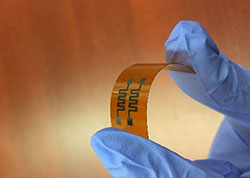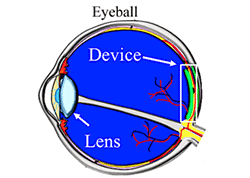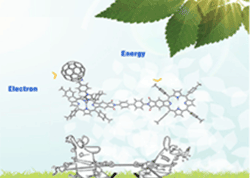Composites, Coatings and Structural Applications
Research areas of interest in this Focus Area includes developing light-weight, high-strength materials for ground and airborne applications; shape-memory-alloys (SMAs), coatings for thermal and tribological applications for automotive and trucking components; effective tribological coatings for tires that can help fuel-efficiency and improve sustainability, particularly as it relates to the heavier trucking industry; environmental sensors for humidity, temperature, pressure, etc. to enhance safety; smart textiles with embedded sensors; sensors for structural health monitoring of bridge and transportation systems that can promote basic and applied research programs to improve safety and sustainability of transportation systems and related infrastructure. Some of the activities in this area for PTI-affiliated faculty include creating composites of nanomaterials and organic materials using 3D printing to form sensors, such as strain-dependent electrical sensors for wearable electronics, using nanoindentation techniques to study wear and friction.
Shown below is work being conducted in PTI-Director Kaul’s research group, the Nanomaterials and Devices Lab, where composites of 2D materials are made using hybrid organic-inorganic materials with 3D printing to develop sensing devices for wearable electronics and other strain-dependent sensing platforms.




In PACCAR-affiliated faculty, Prof. Marcus Young’s Lab, The X-Lab: Processing and Characterization of Structural Metallic Materials, active research is being conducted on Shape Memory Alloys (SMAs), such as NiTi-, Cu-, and Fe-based, as well as refractory and reactive metal alloys such as Ti, Zr, Hf, Nb and Ta, as well as lightweight alloys such as Al-, Mg-, Ti-, and Zn-based. The figure below shows a schematic of synchrotron radiation X-ray scattering techniques, specifically combined fluorescence, radiography, and diffraction, to examine materials ex situ or in situ during electro-chemical or thermo-mechanical property changes resulting from structural changes occurring at the nano- or micro-scale. The lower image shows a phase and strain map, respectively, produced from synchrotron radiation X-ray diffraction measurements on a compact tension sample of NiTi shape memory alloy.

Reference:
M.L.Young, S. Gollerthan, A.Baruj, J.Frenzel, W.W.Schmahl, G.Eggeler, “Strain mapping of crack extension in pseudoelastic NiTi shape memory alloys during static loading,” Acta Materialia 61(15), 5800 (2013). DOI: 10.1016/j.actamat.2013.06.024

The figure on the right shows a NiTi-based shape memory alloy foam produced using a dissolvable salt preform. This research highlights processing capabilities to produce porous metallic materials, which includes salt-replication, 3-D printing, and ice-templating/freeze-casting.
References:
Y. Qiu, H. Yu, and M. L. Young, “Mechanical Properties of NiTi-Based Foam with High Porosity for Implant Applications,” Shape Memory and Superelasticity 1(4), 479 (2015). DOI: 10.1007/s40830-015-0040-1
S. Briseño Murguia, J. Barclay, S. M. Aouadi, M. L. Young, “Surface Modification of Titanium Foams Produced by Freeze‐Casting,” Ch. 15; in Ceramic Transactions Series, Book Editor(s): N. P. Bansal, R. H.R. Castro, M. Jenkins, A. Bandyopadhyay, S. Bose, A. Bhalla, J. P. Singh, M. M. Mahmoud, G. Pickrell, S. Johnson, 2018. DOI: 10.1002/9781119423829.ch15
This figure shows processing capabilities of metals from the melt to plate/rod to wire, specifically a NiTiHf high temperature shape memory alloy.

Work conducted in PTI-affiliated faculty, Prof. Marcus Young’s lab, shows micro- and nano-actuation devices made using novel processing techniques below. The material is specifically a NiTi shape memory alloy. The figure shows pre-alloyed powder processing of NiTi shape memory alloys. The powders were produced from wire using a hydriding-pulverization-dehydriding method.

Reference:
S. Briseño Murguia, A. Clauser, H. Dunn, W. Grogg, L. Mello, Y. Snir, R.E. Brennan, and M.L. Young: “Low Pressure and Low Temperature Hydriding-Pulverization-Dehydriding Method for Producing Shape Memory Alloy Powders,” Shape Memory and Superelasticity, 4 (2) 313-326, June (2018). doi.org/10.1007/s40830-018-0173-0








